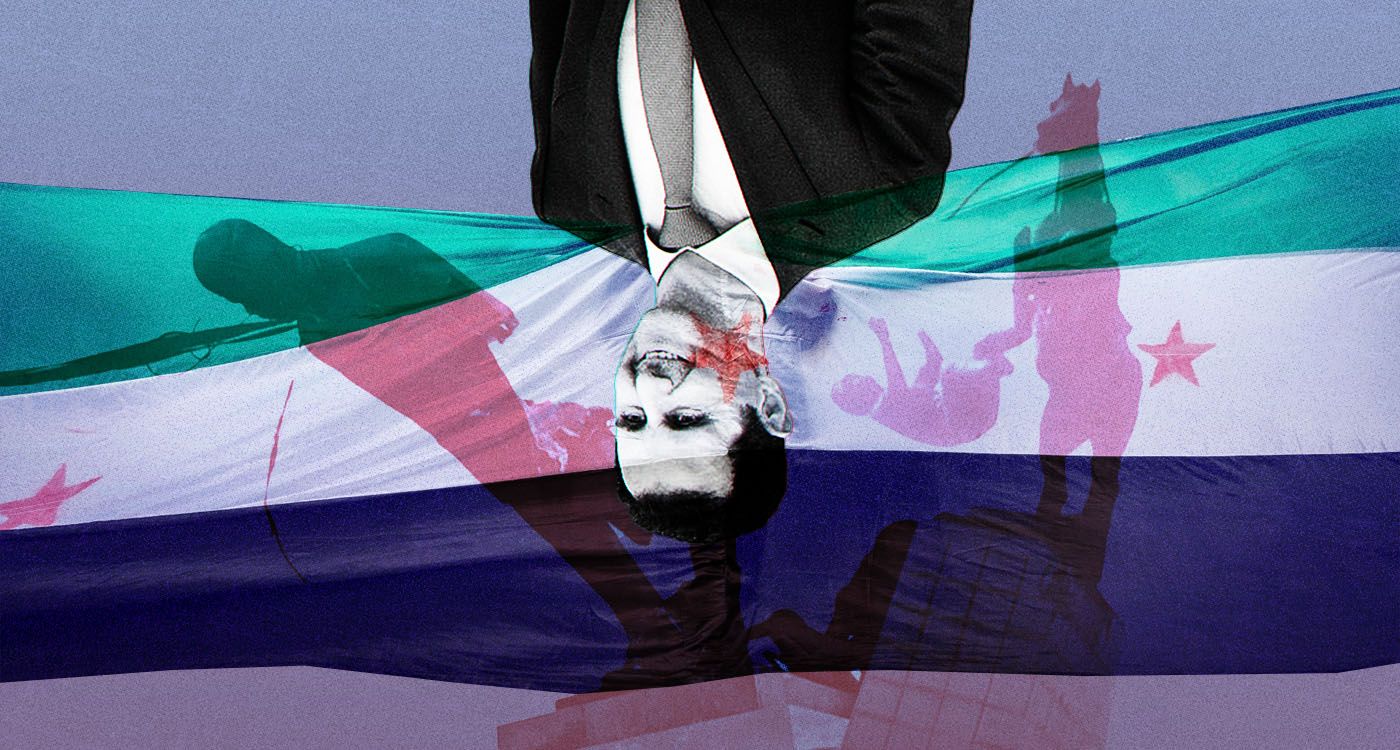- Home
- Middle East
- Fall of Assad's Regime and Syria’s Fractured Struggle for Unity

©This is Beirut
There’s a saying in the Middle East: “The house divided will collapse under its own weight.” For over a decade, Syria has been that house. But now, with the hypothetical fall of the Assad regime—a specter many Syrians have dreamed of or dreaded—the question looms larger than ever: Can Syria, shattered into a mosaic of ideologies, sects and grievances, ever become whole again?
This isn’t the first time a nation has tried to stitch itself back together after the fall of a repressive regime. But Syria is no Germany or Japan post-World War II. Here, the collapse is layered with sectarian fault lines, the scars of civil war and a society torn between secularism and Islamist revivalism. The challenge isn’t just to rebuild homes, it’s to rebuild trust among neighbors who no longer speak the same moral or ideological language.
Before the war, Syria was a country that managed to wear a mask of secularism. Damascus hummed with the sounds of both the call to prayer and the chatter of secular intellectuals in cafés along Straight Street. The Alawite-led Assad regime championed a pan-Arab identity to suppress sectarian tensions, at least superficially. Women in miniskirts and hijabs strolled the streets side by side. Christmas and Eid were both celebrated with public fervor.
But this façade of unity was built on fear, not trust. The regime’s secularism was never egalitarian, it was weaponized to suppress any dissent, religious or otherwise. Sunnis, who make up the majority, felt increasingly alienated under an Alawite-dominated government. Islamists, unable to openly organize, went underground, seeding resentment that would later erupt with devastating force.
When the Arab Spring ignited in 2011, the regime’s opponents were a motley coalition: secular democrats, moderate Islamists and hardline jihadists. Over time, the civil war deepened these divisions. Secular activists were sidelined, often violently, by more organized Islamist factions. In rebel-held Idlib today, Sharia law dominates public life, while in Kurdish-controlled areas, gender equality and secular governance are championed. Syria became a patchwork of ideologies, each claiming to represent the “real” Syria.
In Aleppo, once Syria’s economic powerhouse, you could hear Armenian hymns in Christian neighborhoods, Arabic in bustling markets and Kurdish folk songs on the outskirts. But the war turned these overlapping lives into parallel existences. After the regime’s fall, what happens to the trust between the Sunni merchant who once bought spices from his Christian neighbor or the Alawite teacher who once taught children from every faith?
In post-regime Iraq, sectarianism became institutionalized. Sunni and Shia militias carved out zones of control, and Baghdad’s neighborhoods became gated enclaves of mistrust. Syria risks the same fate but amplified by its unique diversity: Druze, Kurds, Christians, Alawites, Sunnis and a spectrum of political ideologies that range from secular to Islamist.
Take Homs, a city once called the “capital of the revolution.” Today, it’s a hollow shell. Sunni families who fled regime barrel bombs are reluctant to return, fearing their Alawite neighbors now see them as traitors. In Raqqa, where ISIS once declared its caliphate, tribal leaders are trying to mediate between locals who collaborated with ISIS and those who suffered under it. It’s a fragile peace held together by whispers of hope and the haunting memories of war.
Without the iron fist of the Assad regime, the fear is that Syria’s divisions will deepen. Secular liberals in Damascus dread a future where Islamists dominate the political sphere, pointing to the Taliban’s resurgence in Afghanistan as a cautionary tale. Meanwhile, Islamists argue that Syria’s secularism was always a tool of oppression, a betrayal of the country’s Islamic heritage.
But there are glimmers of possibility. In northeastern Syria, Kurdish and Arab women serve together in the Syrian Democratic Forces, challenging both patriarchy and sectarianism. In the diaspora, Syrian artists like Omar Offendum blend traditional Arabic music with hip-hop, creating a new cultural narrative that transcends old divisions.
For Syria to heal, it will need more than a new constitution or foreign aid. It will need a collective reckoning with its past and a shared vision for its future. Town hall meetings in liberated cities could bring together secularists and Islamists, Christians and Muslims, to confront their grievances and forge compromises. Schools must teach children about coexistence, not just the glory of their sect or ideology.
As the dust settles over the rubble of Assad’s palace, the world will watch Syria’s next chapter unfold. Will it be another cautionary tale of a nation consumed by its divisions? Or will Syrians defy history and show that a house divided can, in time, become a home again?
The answer lies not in ideology, but in the hearts of Syrians themselves. Rebuilding trust may take a generation, but perhaps that’s the real revolution Syria has been waiting for.
Read more




Comments